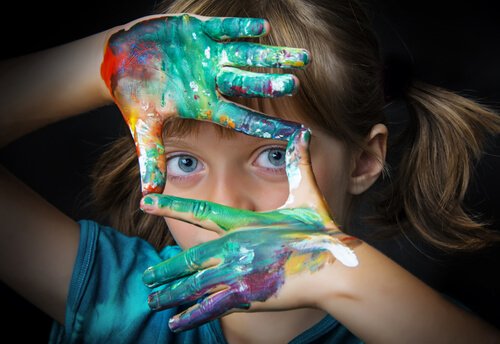Jean Piaget, a Swiss epistemologist, and biologist, devoted much of his life to making important contributions to childhood studies. Among them is the theory of cognitive development. According to this theory, the human being develops from birth, constantly overcoming different stages.
Piaget introduced the idea of there being different mental processes of the child. His theories involved how a child thinks and in what ways this differs from adult thinking. He explained the evolution of children’s thinking through different stages, during which time they develop and evolve, both physically and mentally.
This epistemologist affirmed that children’s development isn’t linear, but that evolution occurs in stages, in which characteristic patterns of each age are configured. In fact, for Piaget, intelligence is the result of a process of biological, social, and environmental maturation.
According to Piaget, children conceive of the world differently from adults. As a matter of fact, they build a mental model of the world from the progressive reorganization of their cognitive processes. In principle, they understand their environment, then go on to experiment with it and discern between previous and new learning.
“Every time we teach a child something, we keep him from inventing it himself.”
-Jean Piaget-
Stages of the development of child thinking
Jean Piaget distinguished four stages of the development of children’s thinking:
- Sensorimotor period. From birth to two years.
- Preoperational stage: From two to seven years.
- Concrete operational. From seven to 12 years. It concerns logical operations.
- Formal operational. From 12 years to adulthood.
With these studies on human intelligence, Jean Piaget laid the foundations for genetic epistemology which was later incorporated into psychology and educational theories. His source of inspiration was his own children, whom he observed and analyzed to develop his theories.
The preoperational stage
The preoperational stage occurs between two and seven years. During this stage, some achievements are manifested with respect to the previous stage. For example, the ability to make use of internal images, handle diagrams, use language, and symbols.
During the preoperational stage, the child develops their own conscience. One of the main characteristics associated with this achievement is seen in the prevalence of egocentric thinking. In addition, imagination is of great importance during this stage.
The development of the use of language is extremely significant during the preoperational stage. This, coupled with more representative knowledge, helps the child improve their communication. Furthermore, they’re able to capture and understand ideas better, hence can express themselves better.
Piaget subdivided this stage into two:
- Pre conceptual. It lasts from two to four years old. At this stage, the child isn’t able to understand relative terms, such as major and minor.
- Intuitive. It lasts from four to seven years. At this stage, the child has acquired the use of relative terms. However, they’re limited in their logical ability.

General characteristics
The preoperational stage is characterized by the following aspects:
- Centralization Children are only able to focus on one object or situation at a time. Indeed, at this age, they experience difficulties in attending to several aspects simultaneously. In addition, they’re more likely to focus their attention on non-social issues than those of a social nature.
- Self-centeredness. With this term, Piaget refers to the way the child sees and describes things. In fact, they all revolve around the child’s own experience. Everything is centered on the child.
- Animism. This is the belief that non-human objects, whether toys or other things have human feelings. In fact, Piaget thought that a child of this age believes that the natural world is alive, and has both a purpose and a conscience.
- Artificialism. They believe that certain aspects of the world around them are made by humans. For example, clouds.
- Irreversibility. Inability to reverse a sequence of events from point X to its starting point.
At this developmental stage, children play, not with each other, but in parallel. In fact, they’ll play sharing the same space, but each one is absorbed in their own world and they’ll rarely interact. However, they have the ability to perform symbolic games, representing themselves or objects in different roles.
The post The Child’s Preoperational Stage of Development, According to Piaget appeared first on Exploring your mind.



















Comments